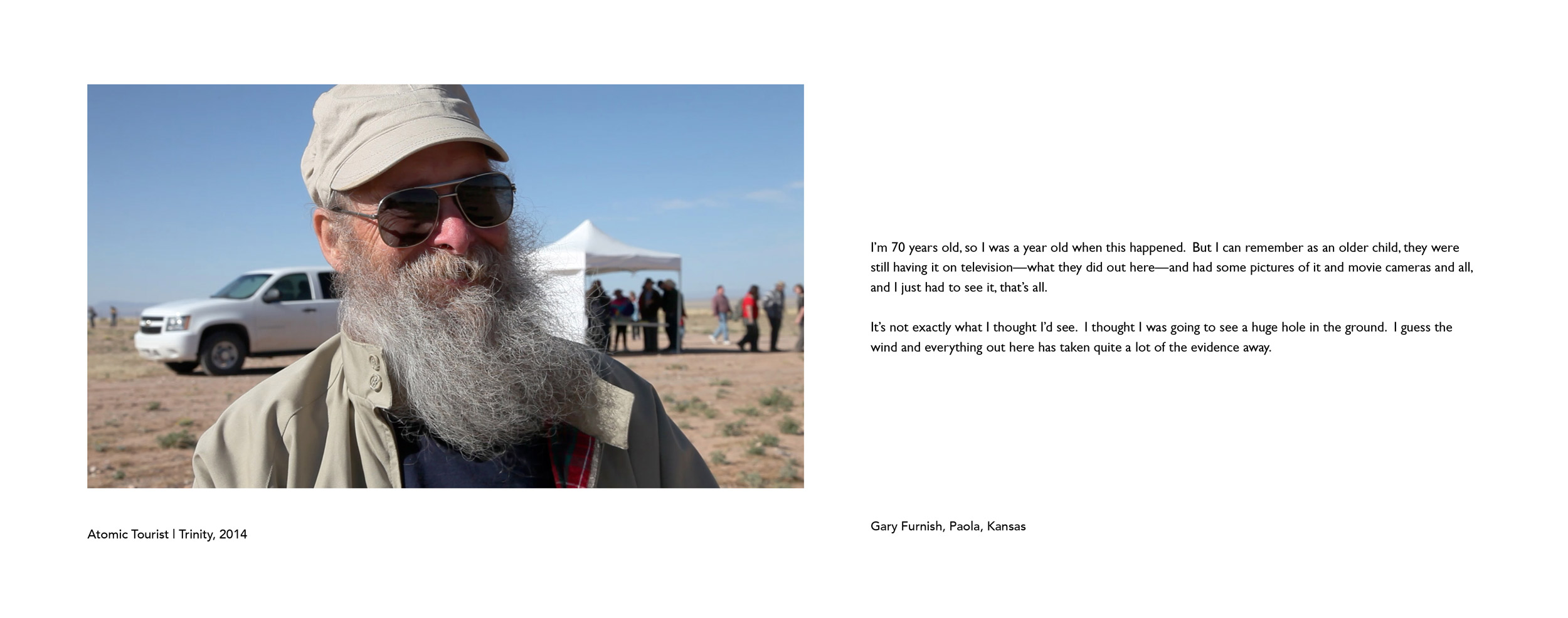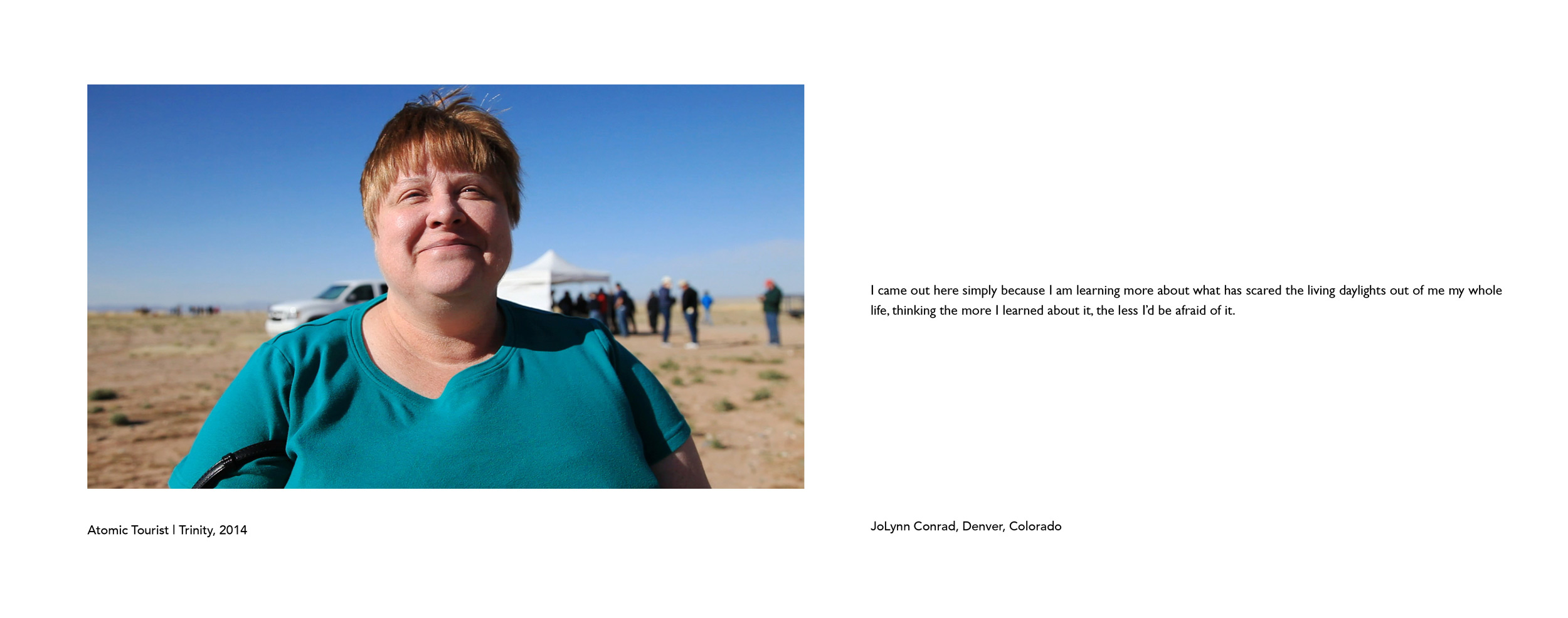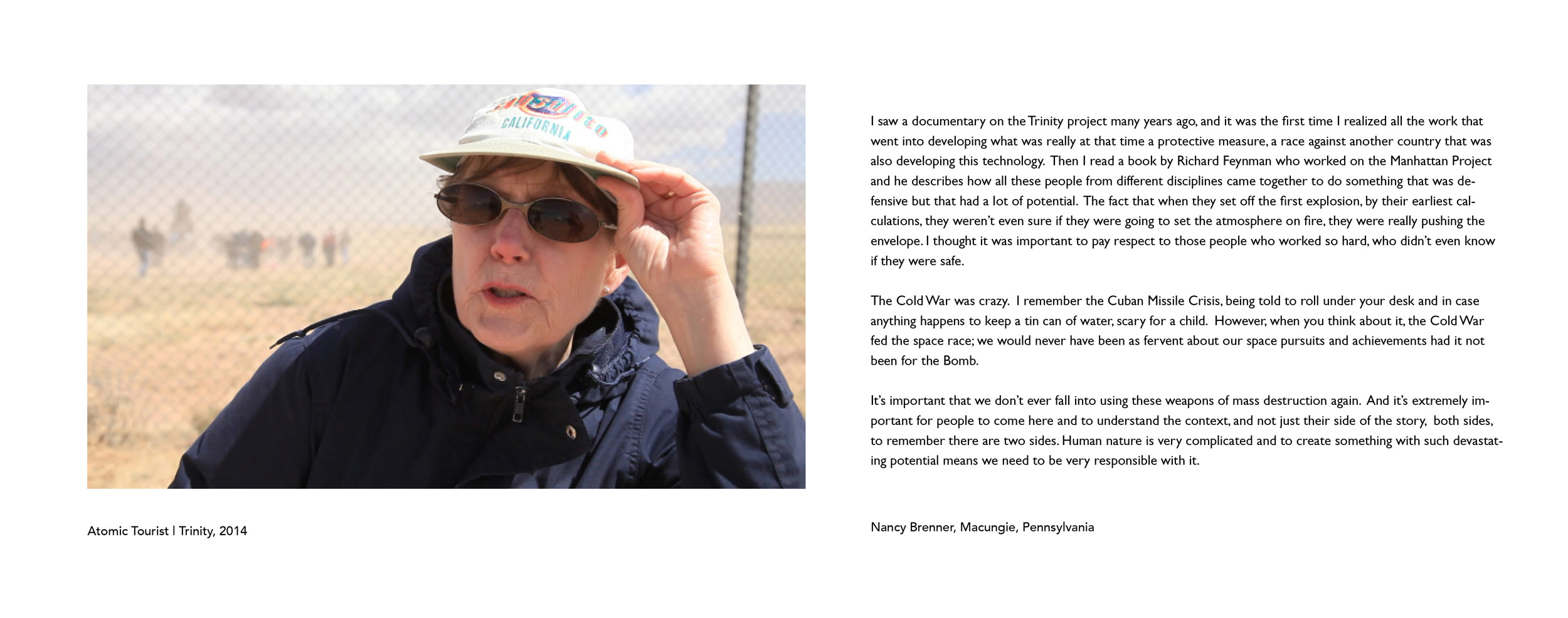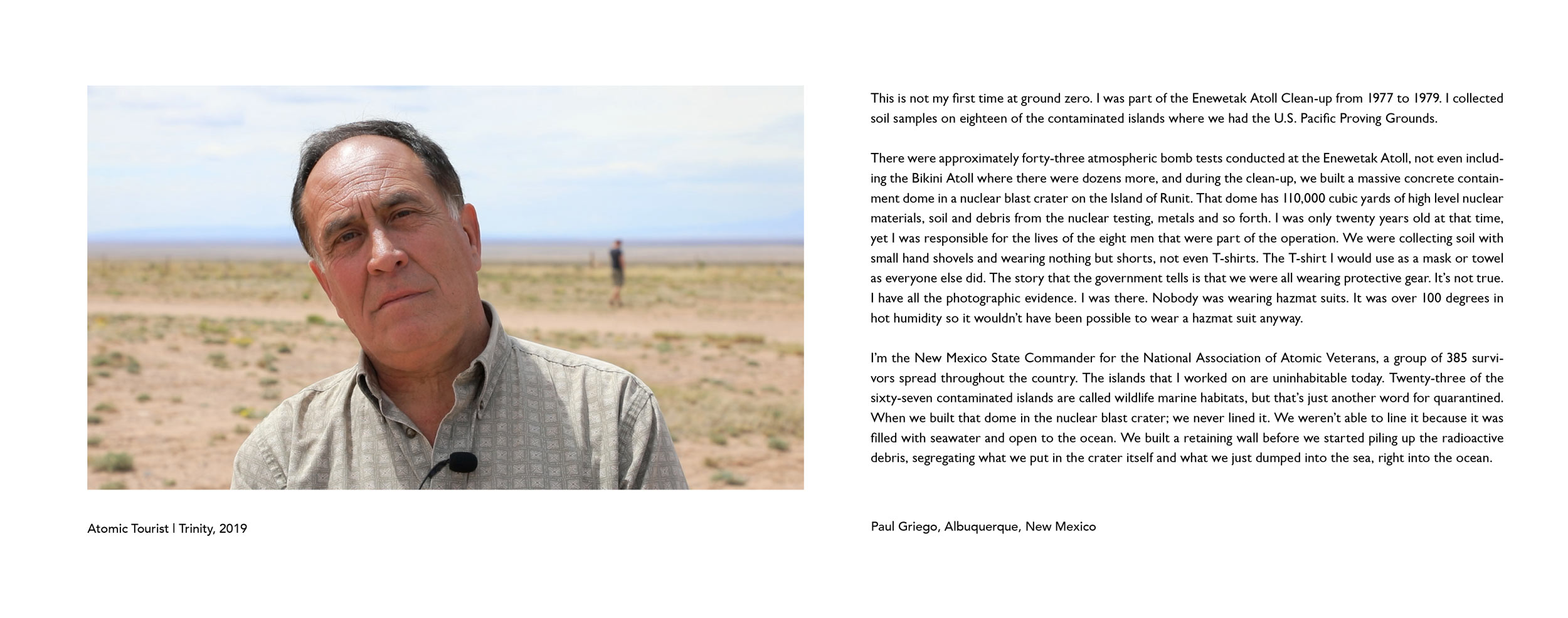

TRINITY
Weaponized Landscapes: Trinity is a framed archive and exhibition of artist Mary Kavanagh’s curatorial and photowork Atomic Tourist: Trinity (2014 – ) on the environmental, geological, discursive, and visual history of the Manhattan Project’s Trinity Test outside of Alamogordo, New Mexico. Beyond the mushroom cloud’s ubiquitous iconography, she documents Trinity’s visitors and their personal testimonies and their deep connection to the site.
Interviews
[Password protected pending copyright.] From over 100 interviews she has conducted since 2014, Kavanagh has selected nine videos that offer insights into the meaningful connections between the Trinity Site visitors and the site of the first atomic bomb test. Well out of the way for most travelers, the Trinity Site has proved a strange attractor for historians, educators, scientists, families, military professionals, and motocyclists on a long journey. For Weaponized Landscapes, she and I have curated this small collection of visitor narratives that offer the profound ways in which habitants and non-inhabitants of this unforgiving landscape come to find connection to the land in rational, emotional personal, historical, or future-thinking ways.







Stills
From those hundred testimonies, Kavanagh has identified themes that describe the personal and professional motivations visitors have acted on to make the pilgrimage to the Trinity Site. Among these themes are spiritualism, ecological and environmental thinking, and critiques to American essentialism and militarism. Isolating these thematic testimonies into stills with accompanying test, Kavanagh positions the portrait of an individual with their personal motivations.
















Trinity3 (2020)
Beginning with a trip to White Sands, New Mexico, Trinity3 is pursuant of archival and historical research and fieldwork into the first test of the atomic bomb in July 1945. In a two-channel diptych, Los Alamos National Laboratory footage is paired with a collage of personal testimony from the sites visitors. Since 2014, Kavanagh’s acute attention to the personal and historical narrative culminates into more than 100 interviews with visitors to the Trinity Test Site and memorial that, when paired with archival footage, attests to the layers of environmental memory laden in the charged site. This videowork is a collection of testimony and archival footage that contributes another layer to the discursive record, an environmental history that offers complicated, multivalent histories of attachment to landscape.
